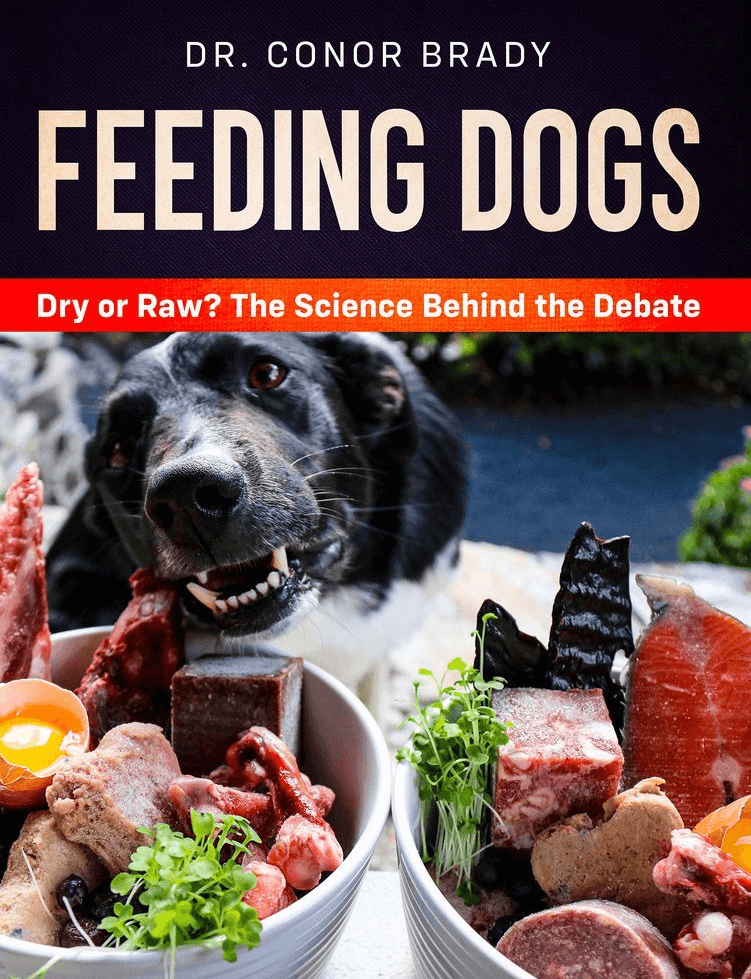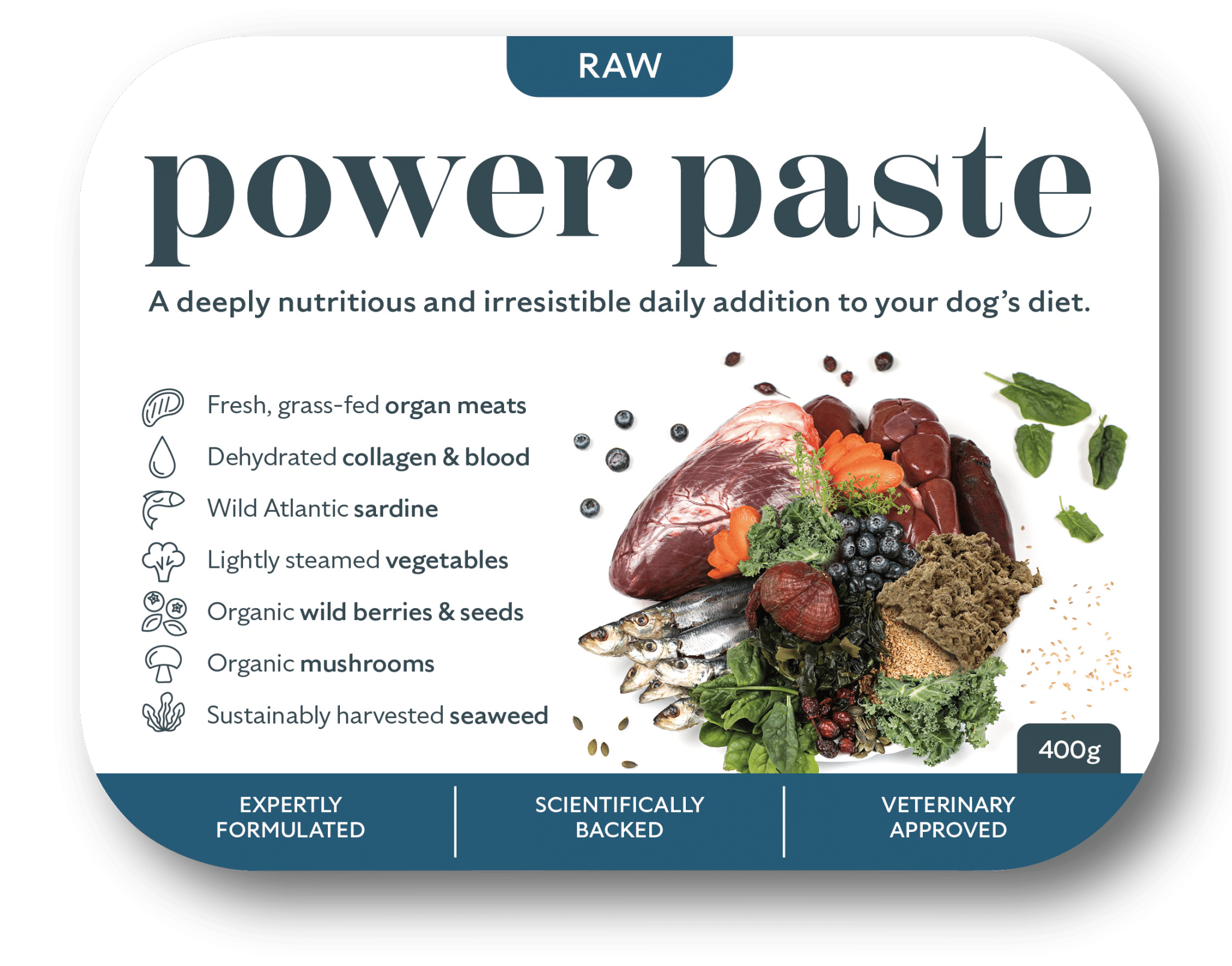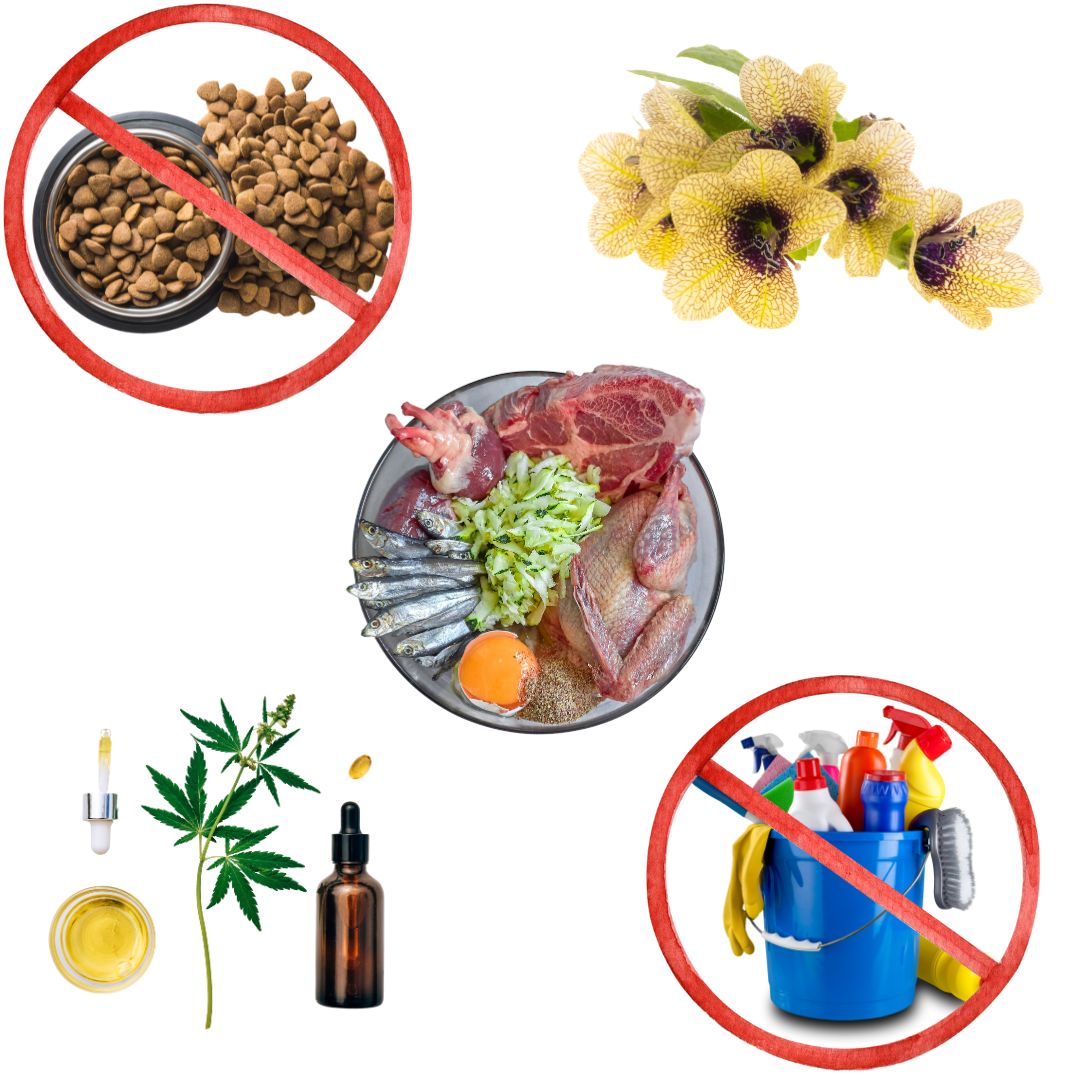Hands up Who’s Given Their Dog Antibiotics in the Last Year?
Has anyone noticed that the application of antibiotics (often used with in conjunction with steroids) is now absolutely routine by your vet? Got a cough? Antibiotic. Got a dickie tum? Antibiotic. Got a rash? Antibiotic. Got a sore ear? Antibiotic. Your dog’s turning left a lot? Antibiotic.
But this gross over-use of antibiotics, largely for completely undiagnosed “possible bacterial issues” (it could be a virus causing the cough, it could be yeast in the ear, it’s usually the wheat in dry food that is upsetting the gut and causing the tropical sprue) is most likely creating the same time bomb in your pet that we are now seeing in human populations today.
This article will show you how the gross over-use of antibiotics in an animals (human or otherwise) that do not need them is a recipe for total disaster down the line. In fact it’s no longer “down the line”. It’s happening right now. The decline in effectiveness of antibiotics and the rise of “superbugs” is now responsible for 148,000 American deaths per year (with MRSA, Methicillin-Resistant Staphylococcus Aureus, accounting for a good chunk), and that number is growing rapidly.
With this in mind, and the fact you absolutely do not want your little carnivore pooing out drug-resistant Salmonella, we all need to give a few moments to understand our relationship with bacteria, the rise of superbugs and the decline of antibiotics.

What are Bacteria?
Has anyone seen the documentary on Netflix about superbugs called Resistance? It has given much of the content of this article below. It highlights that our knowledge today of bacteria is very confused. First of all by weight bacteria outnumber us on this planet by 100,000,000 to 1. Their diversity is staggering and we only know a fraction of them. They make plants function, they control the methane, hydrogen, phosphorus levels in the atmosphere. They control plankton. They are disease. They are life. They are death. We have 1.5kg of them in our guts. They digest our food. They essentially communicate with and govern our immune system. In fact you are essentially one big mass of bacteria that has evolved to work together, one cell communicating with another, to form one big, functioning unit.
They are on your hands, in your eyes, in your lungs, in and on your food and for the very, very large part they are no harm, in fact most are beneficial for reasons we know and in intricate ways we are yet to discover.
They are earth’s original survivors. Aided by an ability to replicate 500,000 times faster than we can they have been happily thriving and adapting on earth for a thousand times longer than anything resembling a human, and they have become extremely good at it. In fact studies show that given enough exposure and trillions of deaths they can evolve their way round an antibiotic / antimicrobial in a year. Time and exposure. That’s really the problem.
What are Antibiotics?
Antibiotics are poisons made largely by fungi that kill bacteria and not us. They were first sort-of discovered by Alexander Fleming when he noticed a sort of dead zone around a fungus where bacteria couldn’t grow. He didn’t get the potential therapeutic affects however.
Later two British scientists (Florey and Chain) isolated the good bits for use inside the human body, just in time for WW2 (more people died from infectious disease in WW1 than from bombs and bullets). They called it Penicillin. And boy was it successful.
The first signs that we were’t using antibiotics correctly was Vietnam. The Americans gave bottles and bottles of it to the prostitutes in Vietnam who within a year developed a penicillin-resistant form of gonnorhea. As a result penicillin today doesn’t work for gonnorhea, for the large part.
Antibiotics are the first and only drug so far that actually stopped infectious diseases in it’s tracks. It is absolutely an elixir. In 1945 Fleming warned of “wasting” penicillin. We ignored that. We have taken this precious substance and squandered it.
So why can’t we stop?
 The problem with Antibiotics
The problem with Antibiotics
A key fact about anti-biotic use that we sort-of-learned in school is that if they don’t kill the bug they will actually make it stronger. This is Darwinism at it’s best. The weak die. The strong survive. The remaining population is more robust. Only killing off the weak bacteria leaves behind bacteriia that were better at resisting the drug. So the old adage of finishing your course of antibiotics is very sound advice should avoiding super bugs be your aim. But it’s far from just that.
1. Overuse of Antibacterials
Bacteria have been around for billions of years. Then humans come along in the last second and begin spraying our nasty chemicals everywhere. Most of the bacteria die. Some survive. So we use another chemical. Most die. Some survive. Now it’s resistant to two chemicals, and so on. If one of them is a nasty bacteria you can create a superbug that is untreatable in a hospital as we have been training it for the event.
We put antibacterials in hand soap, surface cleaners, kids toys, ear plugs, baby carriers, underwear, yoga mats, helmets, handrails, concrete, skin wipes, wall paper, sun lotion, calculators, chopping boards, lip gloss, tooth brushes, tonnes and tonnes of of it in and on our food, cafeteria trays, pillows, duvets, pencils, first aid strips, mouthwash, air filters, humidifiers.
The problem with most dogs and cats today is that they are no longer eating food. They are eating food-like products, products that need to be preserved with anti-microbials. It’s in their dry food. It’s in their treats. It’s on their pigs ears and bones bought in pet stores. We wash their bowls in it. We put it on their toys to “freshen their breath”.
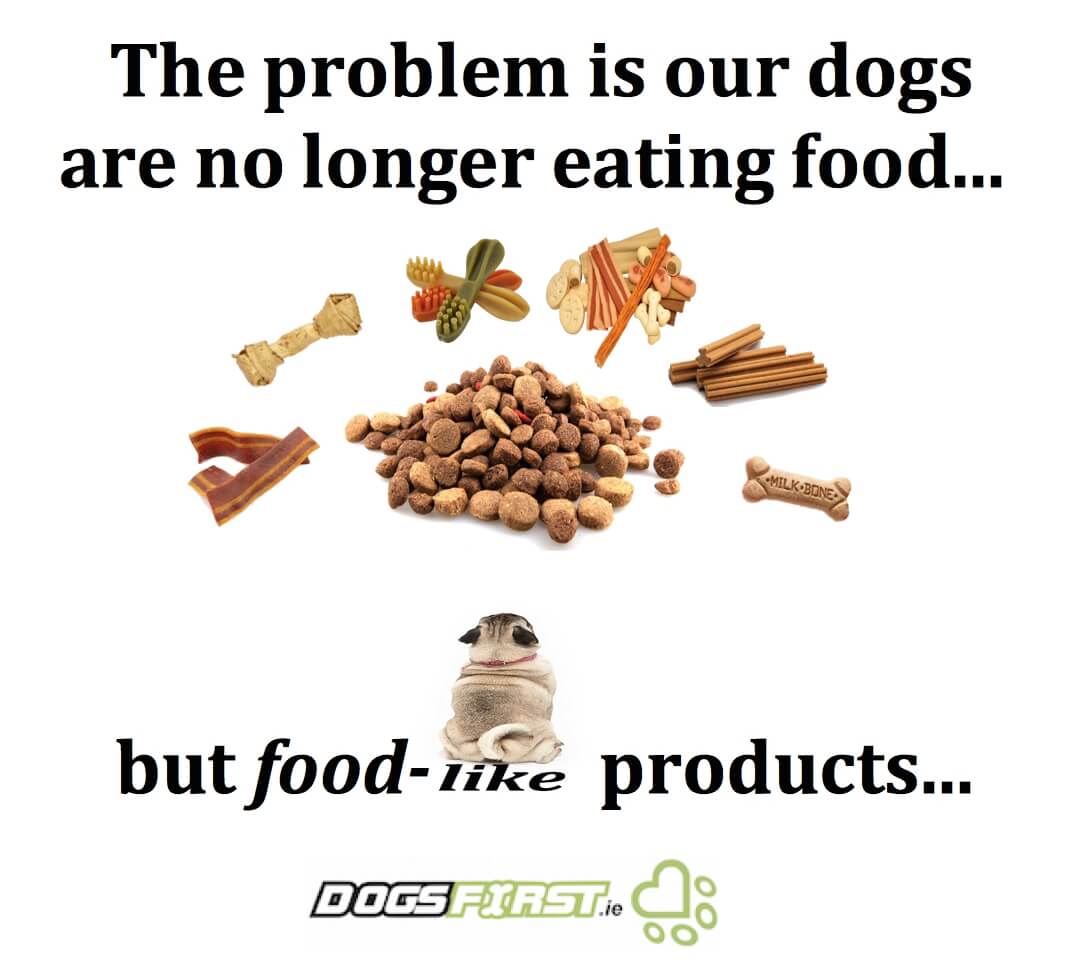
Why?! There is no reason for it, asides very effective marketing. Let’s face it, when you hear the word bacteria you all see the guy below. It’s never a positive image. You’re told you need to “fight” germs. As if you could.
Asides the fact the bacteria you are trying to kill will work their way round those chemicals within 3 years, the science today is flipping, saying that “exposure” to that pinch of “dirt” will actually increase your life, decrease your allergies etc.

2. Overuse of Antibiotics by the Medical Profession
Most of medicine is now based around antibiotics. There would be no transplants without them, heart infections would kill half the affected, child birth would be more dangerous. Taking antibiotics away from these makes them more dangerous. That’s a given.
Ignoring the role of drug companies for the moment, the main reason doctors (and vets) prescribe antibiotics is FEAR. Not fear of being sued but fear of being wrong. If a patient comes in with symptoms of a virus there is a 5% chance it could be a bacteria, that’s the throw away figure. The symptoms after all are pretty much identical. The thought process is to prescribe antibiotics “just to be on the safe side”. After all, if there is a chance it is a bacteria, it may bloom and possible kill the patient. They think “sure one won’t matter much, ahhh I better give it…”.
Without some way to get an instant diagnosis of virus or bacteria (which still does not really exist in a your GP surgery and certainly not in your vets) doctors will always prescribe the antibiotics in this case. Trying to get them to stop is like trying to stop a juggernaut with your hand.
Sadly the more you treat people (and dogs) with antibiotics that don’t need them then the more you increase your chances of producing a bacteria that becomes resistant, particularly if the person doesn’t finish the course of antibiotics.
3. Overuse of Antibiotics in Agriculture
While medicine is more a case of inertia, agriculture is a different matter. It’s no longer a question of science, a question of if the over use of antibiotics in the meat industry is creating drug resistant baddies. There are literally hundreds and hundreds of studies available that clearly show it is now happening at a frightening pace. In agriculture it is only a question of politics and economics.

The unfortunate truth is adding low levels of antibiotics to food and water of livestock and poultry actually does grow an animal a tiny bit quicker. We still don’t know why. Around this fact the meat industry has sadly built itself. They were now able to keep animals in tighter, ever more deplorable conditions but reducing costs. Antibiotics unfortunately gave birth to the despicably inhumane CAFO’s (Concentrated Animal Feeding Operations) in which 90% of the US’s 9 billion food animals are now produced.


Ignoring the sheer humanity of it, CAFO’s are the epicentre of superbug formation. Its like someone was asking the question “what is the best way to create superbugs” and came up with CAFO’s. They house pack a bunch of creatures together in close quarters, standing in their own filth, day in day out, with no access to fresh food (or even fresh air if you’re a pig or chicken) and just to ramp it up a bit they give them all a small daily dose of antibiotics. Time and exposure.
And the Results of Gross Antibiotic Overkill are…
In the Resistant documentary The American CDC (Centre for Disease Control and prevention) cites hundreds of peer reviewed scientific papers that prove antibiotic use in CAFO’s negatively impacts human health, with the last decade showing a surge in papers and warnings that drug-resistant bacteria (DRB) are getting into the food supply. The result is today that most American meat today is contaminated with drug resistant bacteria. Tests show that you have a 1 in 300 chance of eating ground turkey in the states that DOESN’T have a DRB in it. In one pack of ground turkey they found a particularly nasty Salmonella that was resistant to all 8 drugs that are effective for Salmonella. Salmonella, something that is usually quite survivable. You get this bacteria and you’re dead.
The Keep Antibiotics Working Organisation gives us the following stats:
- DRB’s are currently costing at least $4 billion per year in the U.S.
- 1 in 6 cases of Campylobacter infection, the most common cause of food poisoning accounting for 2.4 million illnesses and over 120 deaths each year in the U.S., is now resistant to fluoroquinolones, the drugs most often used to treat severe food-borne illness.
- 1 in 3 cases of Salmonella poisoning is resistant to more than five different antibiotics.
- Nearly all strains of Staphylococcus in the U.S. are resistant to penicillin
Uncontrollable infections are now killing 148,000 Americans a year, on it’s way to the top 3 killers in the states.
So yes, gross over use of anti-bacterials, gross over use of antibiotics and CAFO’s are bad and getting worse.
Why Doesn’t someone stop them?
Well that’s what the FDA are supposed to do. The Food and Drug Association (you know, the guys that are supposed to oversee the almost entirely self-regulated pet food industry in the states), has known for 40 years what is going on with the gross over-use of antibiotics in agriculture and the rise of superbugs. In the 70’s they said they were going to stamp it our and yet still today won’t implement a single change. The reason being the meat industry and the drug companies and the junk food guys adds up to one hell of a lobby.
Here was the FDA’s convoluted, bullshit response, should you need a giggle:
It’s a very complex issue and there continues to remain gaps in the understanding and I think um that that has driven the kind of inability to move forward that those gaps over the years have always been pointing to the fact we don’t have definitive data so we shouldn’t take any action and I think that’s been the case up until more recently we’ve been pushing for moving forward in a more strategic stratagy that says while yes we agree there are some gaps in the science there is an awful lot we do know…
Instead of implementing strict policies (as they have done in Europe to much success and the reason why we don’t import meat form outside of Europe though we still can and do and simply relabel it in clever ways) FDA has chosen to go with “voluntary” measures. Growers are free to go with or ignore the rules. Exactly like your dry dog food.
The FDA man comes back on to clear it all up for us…
It enables us to work in a…in a…in a collaborative way with the industry, by collaborating we can move forward in a productive way to get this issue addressed…ummm…and at the same time make sure that the products…ummmm….continue to be available to the animal ag community and that we make the change in a real deliberate way which will give us some ability to phase it in over time… umm…and pay attention to what those collateral effects may be as we move forward….umm…. implementing the changes…
That has been their policy for 40 years.
Why not make more Antibiotics?
There aren’t a lot of antibiotics being made anymore, as if making more antibiotics were the answer (the saying goes that developing new antibiotics is like driving a new car on a bad road, after a few months your car’s wrecked so you buy a new one but you don’t need a new car you need a new road).
The throw away figure is it takes ten years and a billion dollars to develop a successful drug. If within a year one bacteria strain is resistant to it, within 3 years a lot of bacteria are resistant and within 5 years it’s useless, reckon shareholders are going to be happy with companies pursuing that line of business? They need new cars for God sake! So big industry naturally begins to look elsewhere for more profitable “lifetime” drugs such as antidepressant, satins, insulin, anti-fat drugs, viagra, heart meds, MS, alzheimers etc.
OK, So how Does all This Relate to my Dog Conor?!
Recently the Public Health England (PHE), the Veterinary Medicines Directorate (VMD) and animal charity the Bella Moss Foundation (BMF) called on Britons with sick pets to ensure they use antibiotics as directed.
Pet owners who fail to follow their vet’s advice when giving medicines to their animals are increasing the risk of antibiotic resistance of bacteria which can pass between pets and people
Like hearing the ad on the radio advising us to stop using antibiotics for a common cold (antibiotics that have to be prescribed by a doctor) apparently if superbugs pop up in dogs it’s our fault, but it’s the total wrong end of the stick.
As with most things food and drug in the pet world, the level of control in the pet world is pretty much absent. As good as anyway. Unlike antibiotics for humans, you can now buy antibiotic medicines such as erythromycin and tetracycline (the same ones used in people) in pet stores. No questions asked. No prescription required.
They’re extremely popular…we probably sell out of certainly erythromycin weekly…
Graham Robinson, a sales clerk at Menagerie Pet Shop in Toronto.
Couple this with the fact that our vets appear to dispensing antibiotics on any and all occasions. So many people arrive to us at Dogs First with dogs suffering recurring skin, gut and ear infections who have been given repeat prescriptions for antibiotics that “don’t seem to be working”. They’re either not working because a) the the bug is resistant or b) it’s not a bacterial infection, it was something else (usually a sensitivity to dry food they have been “prescribed”). The result is the same, over-use of antibiotics in a situation where a bacteria hasn’t even been identified.
I mean, is this so hard to believe? Our vets today are boosting our pets annually for viruses despite the fact that animal was already properly vaccinated BY THEM! They give chemical flea and worm control to dogs with no fleas or worms and “prescribe” a cereal based diet made in China over fresh meat for a carnivore. Apparently common sense and basic science are no longer strong components of the veterinary degree. Unlike pharmacology.
So dog owners (and vets) are clearly an easy target and the market for pet meds the since exploded. In 2014 Americans spent approximately $58 billion on their pets up from $28.5 billion in 2004. An article by the Federal Trade Commission entitled “Competition in the Pet Medications Industry” puts this down to
…increased sales of both prescription and nonprescription (also referred to as “over-the-counter” or “OTC”) medications”
We now know that 1 in 10 dogs in the UK are carrying MRSA (not that they succumb to it).
http://www.nhs.uk/news/2014/05May/Pages/Pets-can-carry-the-MRSA-superbug.aspx
Another crucial point is that dogs house Salmonella in their intestines. So do humans but carnivores house a lot more and of different strains. Most strains are fine. However there are a few dodgy ones in there and certainly if the bad ones bloom for whatever reason they can and do come out in their faeces. To reiterate this is a feature of both dry and raw fed dogs. In fact the only studies showing humans catching Salmonella from dogs have, ironically, been in dry fed populations, perhaps due to fresh-fed dog owners being better educated as to food and surface hygiene.
So regular doses of antibiotics for dogs should be very strongly questioned.
This Doesn’t Sound Good, What Should we do?!
I’m not quite sure. We know that the more rotten meat you feed to a dog the more Salmonella he will poo out (e.g. a pigs ear) so make sure the foods you buy are fresh, at least smell fresh, human grade, reputable dealers and all that. Don’t feed cheap, imported muck. That means no dry food that contains meat, no pigs ears that have been sweating in a perspex box in a pet store for months, no cheap meat treats from China. Keep them clean.
Now if you keep them healthy by doing the opposite to many things your vet is telling you (feed them fresh food), stop using all the useless, nasty chemicals (parasite control for dogs with no parasites, boosters for already vaccinated dogs, kennel cough “vaccine etc) and give them plenty of exercise then they stand a far better chance of not visiting the vet for a jab.
Lots of folk are investigating new approached to decreasing our dependancy on antibiotics. A leader in that is the application of good quality kelp to animal feed stuffs. It’s so far proven to greatly bolster an animals immunity to disease as well as fertility and, incredibly, weight gain in pigs and chickens. Offering the industry this alternative and they’d be a lot quicker to get around the table.
Another product that is proving an incredible antibtioic is oregano oil. More here on how to use oregano oil instead of antibiotics as a first response.
There are brilliant vets that can treat your pets without the need for powerful, synthetic drugs, such as Holistic Vet Dublin in Portmarnock or Tom Farrington in Cork.
And if your vet is prescribing a repeat prescription for an antibiotic (or steroid) I recommend first asking them what bacteria they have identified, if any, and 2) if your dog is dry fed getting them off it immediately. The top 3 reasons for visiting a vet include recurring ear, skin and gut conditions. If your dog has a recurring issue then something recurring is going on. These dogs problems nearly always begin on a wheat-based dry food.
Because most people agree, in order to reduce antibiotic misuse and our terrible fixation with drugs as a whole, we need to go back to treating the cause of an illness, not just the symptoms.

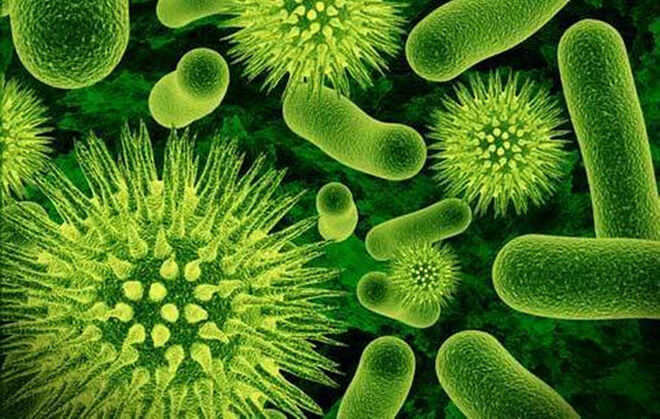

 The problem with Antibiotics
The problem with Antibiotics
